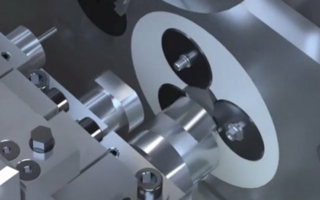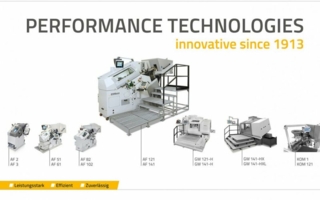12/11/2025 – Secondary operations on Videx machines
Enhancing efficiency and precision
Videx has taken a significant step forward in the efficiency of fastener production with the introduction of end-turning stations on its production lines. These new stations enhance the versatility of Videx’s straightening and cutting lines, providing an expanded range of secondary operations that complement the primary processes such as extrusion.
By adding this functionality, Videx is able to offer an even more comprehensive solution for manufacturers, allowing them to streamline production while maintaining high-quality results.
What’s new in Videx’s secondary operations?
Videx’s end-turning stations allow precise machining of wire products after the primary process such as extrusion. These turning heads are capable of performing up to four operations: facing, chamfering, turning, and drilling.
This level of flexibility is a significant improvement over traditional methods, complimenting the traditional process of extrusion, for example, which is limited to just 15-17% material displacement. The turning heads have almost no limit to the amount of material that can be removed, enabling more complex shaping and precision on the fasteners.
Four turning stations can be added to any Videx production line, whether it starts with coils or bars, offering manufacturers the ability to customize their setups according to production requirements. One of the key advantages is the ability to add multiple turning heads to a single line, further expanding the variety of turned shapes that can be produced. The turned ends of the parts can be left as-is or be threaded or headed, depending on the desired product finish.
Key Features
1. Coolant-Free Turning: The turning process is dry, meaning no coolant is required. This leads to parts coming out clean and dry, ready for the next steps in production. The chips generated from turning operations are efficiently collected in separate tanks, which can be quickly discharged, reducing downtime.
2. Precision Wire Straightening: Before any secondary operations, the wire is straightened and cut to length. Videx’s oscillating straightener, which uses four pairs of feed rollers and three straightening shoes, ensures excellent straightness and repeatability. The wire’s length tolerance is tightly controlled, with a positive stop before cutting to ensure accuracy.
3. Flexibility with Additional Operations: Videx machines can integrate other operations such as heading, flattening, and marking into the same line. This means that once the secondary operations are completed, the parts can go directly into additional processes like thread rolling, without requiring manual handling or operator intervention.
4. Automated Workflow: For example, a typical production line for weld studs can include four secondary operations: chamfering the ends, facing the ends, drilling a bore for an Aluminum ball, and the assembly of that ball. The entire process is automated, significantly reducing labour costs and increasing productivity.
Conclusion
Videx’s enhanced secondary operations, including the new end-turning stations, present a significant improvement in the manufacturing of fasteners. With the ability to perform multiple machining operations on a single line, companies can achieve higher efficiency, greater product complexity, and faster production times. The integration of these features into Videx’s machines offers a streamlined, automated solution for manufacturers, allowing them to meet the growing demands of modern fastener production while ensuring high precision and minimal waste
Videx Machine Engineering Ltd.
20, Shabazi Street
5623107 Yahud/Israel
Tel.: +972 3 5364801-1
videx@videx.co.il
www.videx-machine.com





